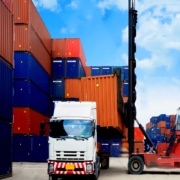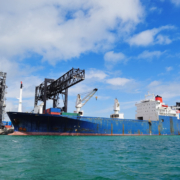Our topic for today is Bill of Lading Rules and Regulations. The logistics sector is like its own world with its language and norms, which might be perplexing or alienating to someone coming for the first time. The word “Bill of Lading” is one that you could hear if you’re new to logistics. As you start exporting your goods internationally and engaging in trade, you’ll come across several crucial shipping documents.
What is a Bill of Lading and What Is Its Purpose
A Bill of Lading is a legal document serving several important logistics and transportation purposes. It is, first and foremost, an agreement between the shipper, transporter, and consignee outlining the products carried, as well as the origin and destination of the shipment.
Now, phrases like shipper, transporter, and consignee may be unclear to those who are new to logistics, so let’s know about them:
- The shipment must be packaged and made ready for transit by the shipper. It might be your manufacturer or warehouse in-house.
- The entity that transports the goods is the carrier.
- The person authorized to receive the shipment is the consignee. Once more, depending on what you’re shipping, this might be either your business or a manufacturer who employs the components you’re selling.
The Bill of Lading serves as the official document of ownership, enabling the holder to assert possession of the cargo. As a result, you must complete your Bill of Lading entirely and precisely. Only the carrier’s obligations concerning the parties responsible for the freight transportation get specified in the Bill of Lading, which also serves as a contract of carriage.
Bill of Lading Rules and Regulations | Bill of Lading Requirements
The bill of lading contains a tonne of details. You might have yet to be aware that a bill of lading must contain specific information as federal law needs. The Federal Motor Carrier Safety Administration, or FMCSA, lists the following criteria:
- The consignor’s name
- Name of the recipient
- Initials and location
- Name and address of the destination
- Size of the cargo
- Description of the freight
- Freight’s weight, volume, or dimension
During a cargo, every carrier should have a bill of lading on hand that includes, at the very least, all of this information. However, a bill of lading contains more details.
The Function Of Bill Of Lading In International Trade
International trade has been a major contributor to social, economic, and political stability for many years. It greatly boosts a country’s gross national product. A bill of lading is a document that attests to an agreement for transporting and shipment of goods shipped by sea for a specific amount of freight. Normally, a shipper delivers goods to a carrier, who then issues a bill of lading through one of his agents.
- A bill of lading is an agreement between a shipper and a transporter, a receipt for shipping goods, and a document of title.
- The carrier, shipper, and receiver must all have authorized representatives sign this document, which must also get present with the shipping items.
- A bill of lading can prevent asset theft if it is managed and examined appropriately.
- Selecting the correct bill of lading is critical because there are various varieties.
Who Issues Bill of Lading
The shipping company issues and the carrier signs the paperwork, which transports the cargo from the port of reception to the discharge port. The invoice gets issued either on a “prepaid basis” or a “freight collect” basis.
Three bills are often issued: one for the shipper, the consignee, and the bank, broker, or another third party. They frequently get famous as 3/3 sets of BOL in trading terminology. Aside from this, under Article 30 of the Uniform Customs and Practice for Documentary Credits, banks and freight forwarders may issue the BOL as a written agreement.
Bill of Lading Rules and Regulations | 5 Functions of Bill of Lading
A bill of lading serves these main purposes in addition to giving crucial information about the shipment:
- It serves as supporting documentation for the carriage contract, which outlines the terms and circumstances under which the transport of the goods will take place.
- BOL shows that the agreement delivered the cargo, and the items were in excellent condition.
- It enables the sale of commodities while in transit and increases available credit.
- Most national and international systems do not consider a title document a bill of lading. It gives the proprietor the legal right to receive a delivery.
- The provisions, terms, and conditions governing the carriage contract get present in the bill of lading.
Importance of Bill of Lading
A bill of lading also has significant financial and ownership ramifications. It is because it also contains the information required for accurate billing. The cost of transporting the package depends on the shipped goods’ size, weight, and density.
A BOL is vital because it helps confirm that the quantity and kinds of goods delivered are the same goods that reach their final destination, similar to any other receipt. Comparing the state of the products when they departed to how they arrived may be present to trace the cargo location at any given time. It is especially useful if it involves LTL freight that gets its handling by several carriers.
Read More










